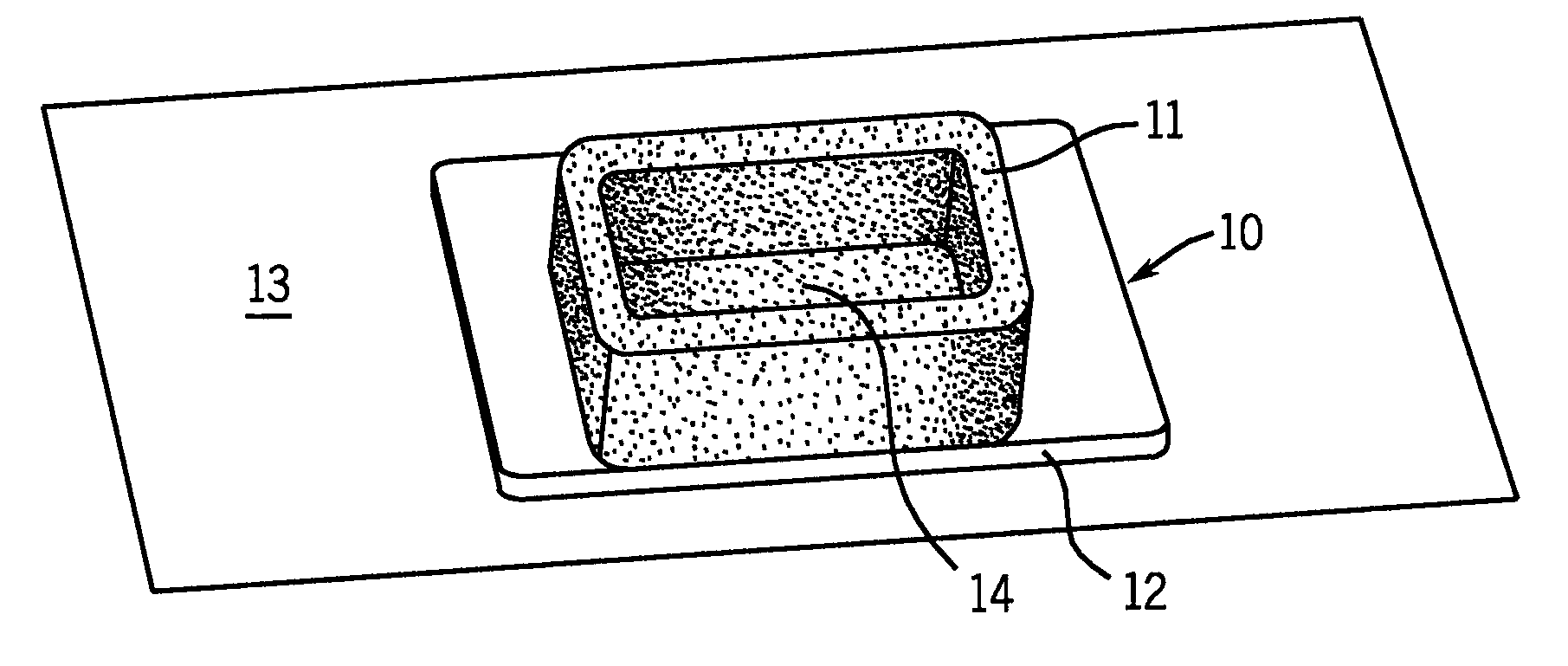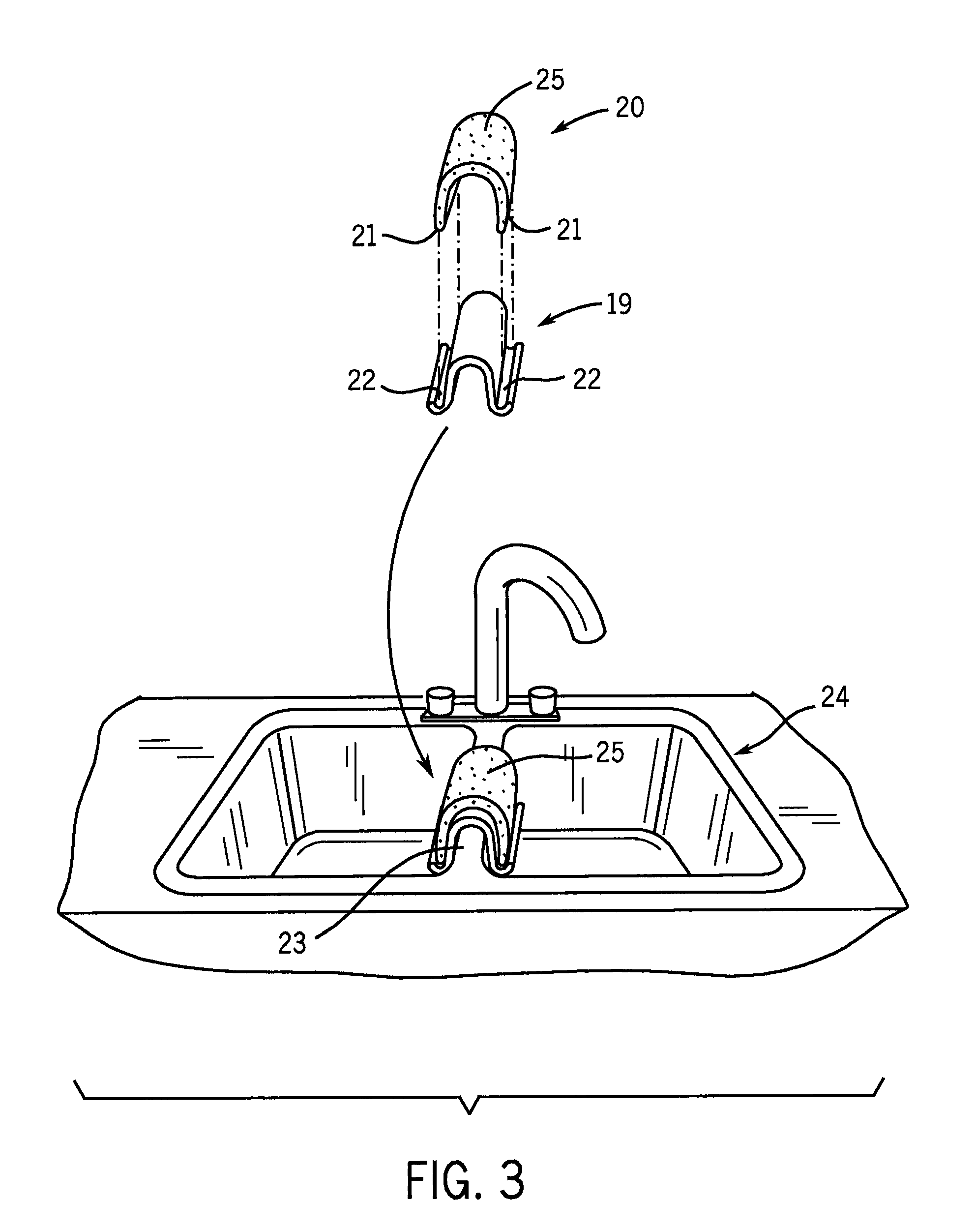Antibacterial holders for cleaning implements
a technology for cleaning implements and antibacterial holders, which is applied in the direction of packaging foodstuffs, containers preventing decay, and other cleaning implements, can solve the problems of undesirable odors and unsightly appearance, occupying an undesirable amount of extra time, and reducing the cost of production of such holders
- Summary
- Abstract
- Description
- Claims
- Application Information
AI Technical Summary
Benefits of technology
Problems solved by technology
Method used
Image
Examples
Embodiment Construction
[0032]Referring first to FIG. 1, there is shown a cleaning implement holder 10 of the present invention. Its upper layer 11 is made from compressed sodium chloride. Its lower layer 12 is designed to protect the countertop or other surface 13 that the holder is placed on from becoming coated with salt from the holder 10. The lower layer 12 may be formed from plastic, ceramic, glass, or other material. Alternatively, it can be eliminated.
[0033]As shown in FIG. 2, a moist, recently used, sponge 15 is positioned on a contacting surface 14 of the upper layer 11, and left there between uses. That contacting surface comprises a solid antibacterial chemical. A wetting agent (e.g. water) is used to help the salt stick together. The amount of wetting agent, the amount of other materials used with the antibacterial material, the amount and time of pressure, and other related parameters can fine tune the amount of antibacterial chemical delivered to the moist cleaning implement from each contac...
PUM
 Login to View More
Login to View More Abstract
Description
Claims
Application Information
 Login to View More
Login to View More - R&D
- Intellectual Property
- Life Sciences
- Materials
- Tech Scout
- Unparalleled Data Quality
- Higher Quality Content
- 60% Fewer Hallucinations
Browse by: Latest US Patents, China's latest patents, Technical Efficacy Thesaurus, Application Domain, Technology Topic, Popular Technical Reports.
© 2025 PatSnap. All rights reserved.Legal|Privacy policy|Modern Slavery Act Transparency Statement|Sitemap|About US| Contact US: help@patsnap.com



